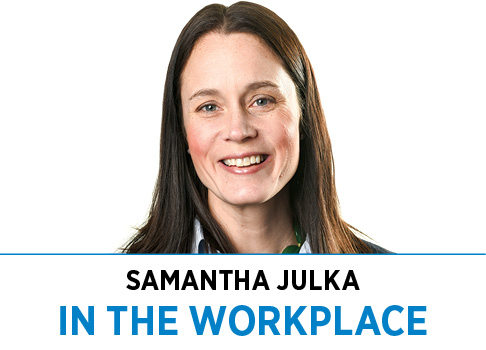Subscriber Benefit
As a subscriber you can listen to articles at work, in the car, or while you work out. Subscribe Now One day a few years ago, I sat at my desk and noticed a small yellow jar next to my keyboard. I picked it up for a closer inspection and realized it was eye cream. I work in an open office, but oddly enough, when I found the little yellow jar, no one was around for me to ask where it came from. The gift seemed to have fallen out of the sky.
One day a few years ago, I sat at my desk and noticed a small yellow jar next to my keyboard. I picked it up for a closer inspection and realized it was eye cream. I work in an open office, but oddly enough, when I found the little yellow jar, no one was around for me to ask where it came from. The gift seemed to have fallen out of the sky.
Days later, I deduced that a few of my colleagues noticed what my overabundance of screen time coupled with three small children was doing to the layer of skin under my eyes, and they thought they should try to help a girl out.
Perhaps to no surprise, my immediate reaction was deep self-loathing. My suspicions were confirmed—I do look old and tired.
My colleagues’ intention was to help, but the impact was hurt feelings. So it goes with intent versus impact, something we see a lot of in our work right now. For example, we work with an organization that moves employees into a private office upon a specific promotion. When the group’s space ran out of private offices to assign, its workforce extrapolated that this promotion was no longer available.
It’s easy to laugh at how absurd that logic could seem, but as we often find in our research, people’s perception of a situation is their reality, whether factually correct or not.
When it comes to the workplace, we have seen many leaders struggle to implement programs and policies and even to update physical work environments. Often, their intent is well-meaning, but the overall impact on the organization is lousy.
Our best advice to leaders is to forecast potential impact as best they can before implementation. Because it’s hard to know what other people might think, collecting data regarding a new initiative can best be done through one-on-one conversations. Make sure to gather information not just from people at your level or within your sphere of influence, but at all levels of the organization and from all demographics. Additionally, before full implementation, a best practice is to prototype your initiative. For example, before you build new social hubs every 30 feet in the office, test one and find a way to measure its efficacy.
Is it too late? Did you already step in a big pile of unintended consequences? First, try not to take it personally; the impact is a result of the action and is not a reflection of your overall leadership. Leaders often go wrong by digging in and becoming defensive about their behavior’s impact. It’s easy to do that. A better path is to listen empathetically to the criticism, apologize if needed, and see where you can pivot to close the gap between your intent and the impact.
The key to matching intent to impact is ownership. Leaders must take ownership of their initiative and work to find common ground with those affected, so everyone can see the same intent. Leaders must own the impact but behave in a way that does not allow it to define them.
As for the eye cream, the good news is, this event quickly became one of those office tales that we like to bring up from time to time when we need a good laugh. Sure, it didn’t necessarily have the impact my colleagues wanted, but after listening to me, they knew how to change their approach for the next initiative in their Sam Improvement Plan belts. So at least it wasn’t a total waste of time.•
__________
Julka is founder of Indianapolis-based Doris Research, which uses design thinking to organize workspaces.
Please enable JavaScript to view this content.
